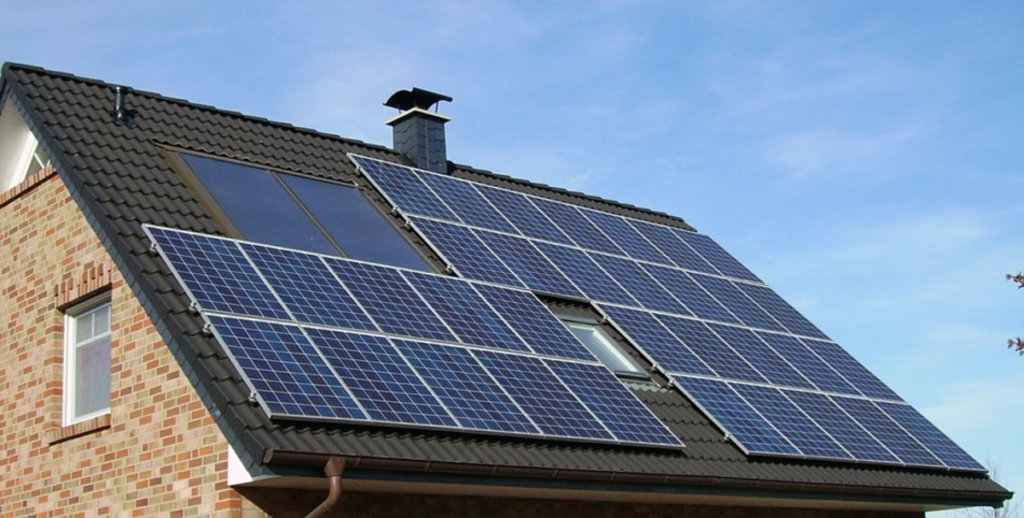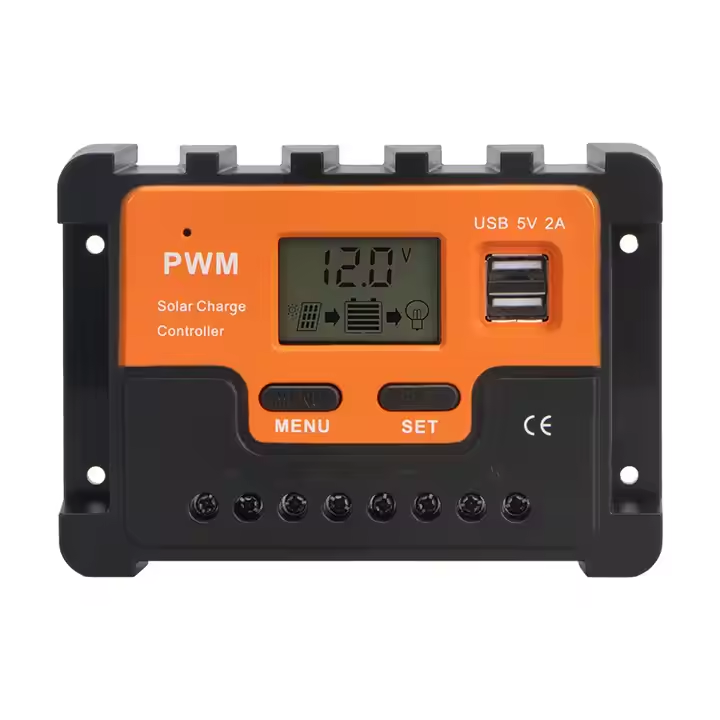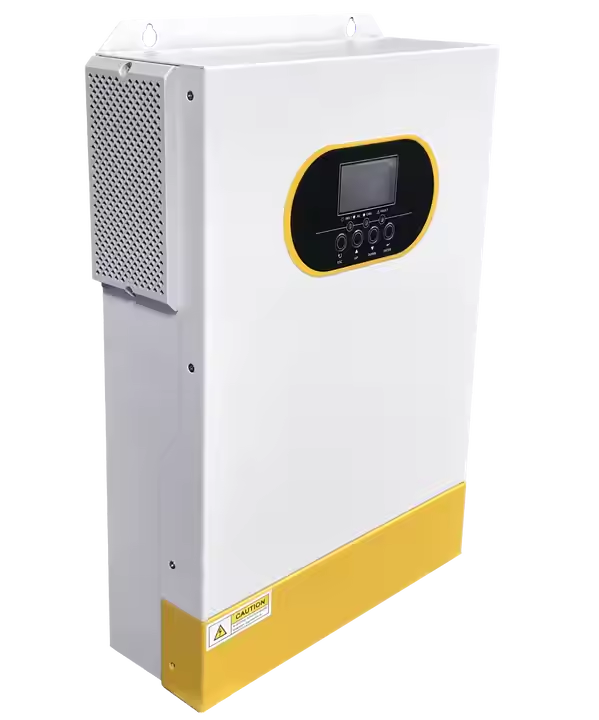In recent years, the shift toward renewable energy has driven homeowners worldwide to consider solar-powered solutions. Within any solar application, two components play a pivotal role in determining system efficiency and reliability: solar controllers and hybrid inverters. Solar controllers regulate the voltage and current from solar panels to ensure safe charging of batteries or powering loads, while hybrid inverters convert direct current (DC) into alternating current (AC) for household use and manage energy flow between solar panels, batteries, and the grid or off-grid loads.
This article provides an in-depth explanation of the working principles, selection criteria, and maintenance strategies for solar controllers and hybrid inverters. It also presents a real-world case study from the Middle East, illustrating how advanced solar technology can be applied successfully in harsh environments.
Solar Controllers: The Gatekeepers of Efficient Charging
Solar controllers serve as the “gatekeepers” that manage the flow of electricity from solar panels to batteries or direct loads. Their primary objective is to prevent batteries from overcharging or deep discharging, thus prolonging battery life and ensuring safety.
Types of Solar Controllers
There are two main types of solar controllers distinguished by their technology:
-
Pulse Width Modulation (PWM) Controllers
PWM controllers are well-established and cost-effective. They operate by rapidly switching the connection between the solar panels and the battery, gradually bringing the battery voltage in line with that of the panels. However, because they do not continuously track the maximum power point of the panels, their overall charging efficiency tends to be lower.
Maximum Power Point Tracking (MPPT) Controllers
MPPT controllers use advanced algorithms to continuously track the solar panels’ maximum power output under varying conditions of light and temperature. This results in higher conversion efficiencies—often achieving up to 95%—especially under conditions of partial shading or low sunlight.
Example in Practice: In a project undertaken in Riyadh, Saudi Arabia in November 2023, an MPPT solar controller was installed in a residential setup. The performance evaluation in December 2023 showed that by switching from a conventional PWM controller to an MPPT unit, the charging efficiency improved by nearly 20%. This enabled the battery bank to reach optimal charge levels more rapidly, even in the extreme temperatures prevalent in the region.
When selecting a solar controller, it is essential to match the controller’s voltage rating and maximum input current with the specifications of your solar panels and batteries. Additionally, features such as remote monitoring and data logging can enhance system management.
SunriseTek PWM Solar Charger Controller 2024 Hot Selling Solar Panel System 12V 24V 48V PWM Charge Controller
Hybrid Inverters: Multifunctional Energy Conversion and Management
Hybrid inverters are the heart of modern solar applications. They combine the functions of traditional inverters—converting DC from solar panels to AC for household use—with advanced battery management capabilities. This dual functionality allows for seamless integration with on-grid or off-grid systems.
Key Features of Hybrid Inverters
-
High-Efficiency DC-to-AC Conversion
-
- Modern hybrid inverters are designed to produce a pure sine wave output. This ensures that the alternating current they produce is of high quality, allowing sensitive household appliances to operate safely and effectively.
-
Automatic Source Switching
-
- Hybrid inverters can automatically switch between solar power, battery power, and grid-supplied power depending on the availability of energy and the instantaneous load demand. This ability is crucial for maintaining a continuous power supply even during power outages or periods of insufficient sunlight.
-
Energy Flow Management
- Advanced hybrid inverters not only convert power efficiently but also manage the charging and discharging cycles of the batteries. They can optimize energy use by directing excess energy back to the grid (in grid-tie scenarios) or storing it for later use during peak load times.
-
Smart Monitoring and Communication
-
- Many hybrid inverters come equipped with built-in communication modules and display screens. These features allow users to monitor system performance in real time, access historical data, and receive notifications when maintenance is needed.
For selection, it is important to consider the inverter’s rated output power, its compatibility with the rest of the solar setup, and its efficiency under different operating conditions. The inverter should also be robust enough to operate reliably in challenging environments, as demonstrated in our Middle East case study below.
SUNSWIFT Solar Pure Sine Wave Hybrid Inverters 24V 3KW Single Phase Off Grid Solar System Inverters
Middle East Case Study: Resilient Performance Under Extreme Conditions
In November 2023, a residential project in Riyadh, Saudi Arabia, was initiated to upgrade an existing solar setup in response to the region’s harsh climatic conditions. Riyadh is known for its scorching summer temperatures—often exceeding 45°C—and high dust concentrations, which can adversely affect electronic systems.
Project Overview
-
Location: Riyadh, Saudi Arabia
-
Climate Challenges: Extreme temperatures, high dust levels, and intermittent grid stability
-
System Components: The project utilized high-efficiency MPPT solar controllers paired with a 6kW hybrid inverter designed to manage both on-grid and off-grid operations.
Implementation and Performance
The system was installed in December 2023, and several key performance indicators were noted during the initial months of operation:
-
Enhanced Efficiency:
-
-
The MPPT solar controllers continuously optimized the charging parameters, enabling the solar panels to deliver up to 96% of their rated power output, even under partial shading conditions caused by dust accumulation. This resulted in a significant reduction of charging time by approximately 15% compared to traditional systems.
-
-
Reliable Power Supply:
-
-
The hybrid inverter automatically switched between solar power, battery backup, and grid power when needed. In one incident of regional grid instability, the inverter seamlessly transitioned to battery power, ensuring uninterrupted electricity supply to the residents for a duration of 12 hours.
-
-
Durability Under Stress:
-
-
Despite the extreme ambient temperatures and harsh dust conditions, the system maintained stable operations with minimal performance degradation. The robust design of both the MPPT controllers and hybrid inverter proved essential in sustaining efficiency during prolonged high-temperature conditions.
-
This case study from Riyadh not only validates the performance of advanced solar controllers and hybrid inverters in extreme environments but also highlights the potential cost savings and increased energy reliability that these technologies offer to homeowners facing similar challenges in the Middle East.
Selection and Maintenance Recommendations
Proper selection, installation, and maintenance are critical to ensuring that your solar controllers and hybrid inverters perform optimally over their lifespan.
Selection Guidelines
System Matching:
Ensure that the controller’s voltage ratings and current handling capabilities are compatible with your solar panel array and battery bank. Similarly, choose an inverter with sufficient capacity to handle expected load peaks without frequent overload events.
Robustness and Certification:
Opt for equipment with proven durability and certifications (e.g., CE, UL). Devices engineered for high ambient temperatures and dusty environments are preferable for Middle East applications.
Smart Features:
Prioritize products that offer integrated remote monitoring and data logging. These features facilitate proactive maintenance and troubleshooting, ultimately reducing downtime.
Installation Best Practices
-
Optimal Positioning:
-
-
Install equipment in locations with good airflow to enhance cooling. Use protective enclosures to mitigate dust and humidity, thereby prolonging equipment lifespan.
-
-
Adherence to Standards:
-
-
Follow local electrical codes and manufacturer guidelines for wiring and grounding to ensure safety and system reliability.
-
Maintenance Strategies
-
Regular Inspection:
-
-
Schedule monthly inspections to check for dust buildup, loose connections, and signs of wear on solar panels and electronics.
-
-
Firmware Updates:
-
-
Keep the firmware of your controllers and inverters up to date to take advantage of performance improvements and new safety features.
-
-
Professional Servicing:
-
-
Engage certified technicians for periodic system audits and deep maintenance, especially after extreme weather events.
-
Conclusion
Solar controllers and hybrid inverters are indispensable components in modern home solar power applications. By ensuring that solar panels work at their optimum power point and efficiently converting and managing energy flows, these devices enable homeowners to enjoy reliable, efficient, and sustainable power, even in challenging climates like those found in the Middle East.
The Riyadh project case study demonstrates that with the proper selection and careful installation of advanced MPPT controllers and a high-capacity hybrid inverter, it is possible to achieve remarkable energy conversion efficiencies and operational stability under extreme conditions. This approach not only boosts performance but also significantly reduces reliance on unstable grid supplies, ensuring continuous power for critical household needs.
For homeowners and energy enthusiasts seeking to upgrade or install a new solar system, investing in quality solar controllers and hybrid inverters, tailored to your specific environmental and usage demands, is a smart and future-proof choice.




